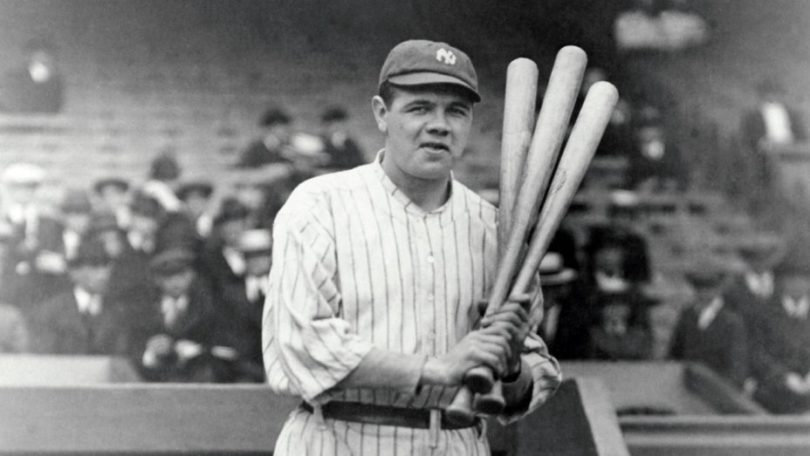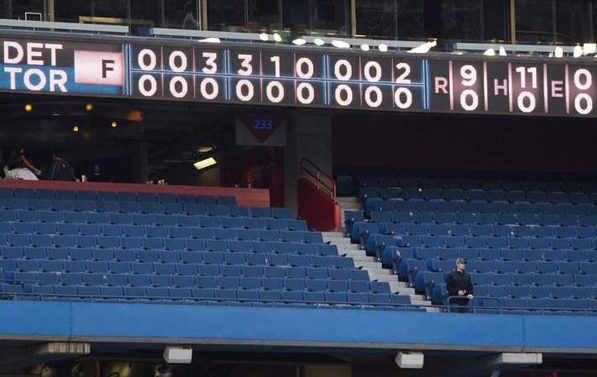

In an article during last season’s home stretch, I voiced my consternation about what I think is an excessive, and in many cases disingenuous, rush to create perceptual distance between Major League Baseball and so-called PEDs. In this piece, I made it abundantly clear that not only am I an ardent detractor of steroids, but I don’t believe the problems of the so-called “steroid era” should be swept under the rug.
What does annoy me, however, is Baseball Hall of Fame voters making a point by electing nobody to the Hall, as if (a) this act seems anything but petulant and (b) attempting to write half a generation out of baseball history will address the larger problem of long-standing cheating, which predates steroids. Moreover, as Bill Simmons astutely pointed out, many of its other problems mirror larger issues that run through our society in general.
I’m going to keep this localized, and not address — in this article, anyway, which is honestly more of an op-ed rant — American society’s broader problems, which are represented in Major League Baseball to varying degrees. I’m just going to address this idea people seem to have that the Hall of Fame is — or has ever really been — about the character of the players. Really, as Simmons and some others have pointed out, it’s a museum. If we were really basing HOF entry on character or competitive integrity, the Hall would be a lot less crowded.
I mean, seriously, let’s just talk about the easy examples. Ty Cobb, by too many accounts not to consider, was a virulent racist and a player whose on-field chippiness and dirty play was notorious by even the most meatheaded, cleats-high, chin-music mentality standards.
Then we have pitchers like Bob Gibson and others, whose deliberate use of the high-and-tight fastball is still remarked upon by announcers and former players (“if so-and-so was on the mound, admiring your home runs would have gotten you a fastball between the letters” … that sort of talk is far too common).
Then there are the spitballers, ball-scuffers and sign-stealers; lots of people in the HOF were known for such things when they were considered “part of the game,” even though many similar tactics would be met with expulsions or suspensions anytime after maybe 1980.
And if we just want to stick with the ballyhooed matter of performance-enhancers, let’s just remind ourselves how “greenies” were distributed in buckets in a lot of clubhouses for so long.
Again, I am not advocating a total laissez-faire approach; I just think that a sport like baseball, for which spiking second basemen and spitting on pitches and loading caps with vaseline and loading pockets with nail files and positioning spies in the stands to steal signs and knocking catchers into next week and throwing 9o mph projectiles at a batter’s head were long considered part of the game, should be a bit more measured in its dismissal of an entire era of professional play, especially a recent one.
Those who know me know I’m something of a historian, and very much a social critic. I am often highly critical of past eras, institutions and practices, and I tend to have a positive view of attempting to move beyond the institutional and cultural transgressions that we inherit. I also believe in the idea of personal and institutional evolution, and believe that often the process — and the effort to improve and transcend — are as important as anything else. As such, I respect the idea of trying to “clean up the game.”
I think it’s great that Major League Baseball continues to pursue those who would attempt to gain an unfair — more importantly, dangerous and precedent-setting — advantage by way of chemistry. That said, I also think this attempt has to be measured in the context of the “get an edge” aspect of high-end competition (which is problematic in too many professions to count, sports-related and otherwise), and pursued without resorting to simplistic labeling of a few sluggers or making an example out of a few people and thus pretending larger problems are solved.
All of this would seem to beg the question: How does Major League Baseball address the steroid issue, distance itself from the negative examples set by some of the most egregious and high-profile offenders and move the sport toward a higher standard of competitive integrity — without obliterating an entire professional era, or seeming to espouse the idea that baseball players only started flouting rules in the 1980s?
To me, I think the matter should come down to this: All things considered, would the player in question qualify as a Baseball Hall of Fame player on the basis of their skill set and impactful play? If so, do these qualifications overshadow their notoriety for matters related to the PED scandal? I’m not saying this is an easy consideration, but based on this consideration, I’d say that most of the standout names on this year’s ballot deserve entry into the Hall. Craig Biggio, Jeff Bagwell, Mike Piazza, Tim Raines and even Barry Bonds and Roger Clemens belong. Not so much Sammy Sosa, for a number of reasons, and I’m on the fence about Rafael Palmeiro. And not Mark McGwire, because he was a crummy fielder and a middling-in-his-best-seasons hitter, home runs notwithstanding. To me, he was his era’s Adam Dunn.
Then again, will Dunn someday belong in the Hall? He does seem somewhat synonymous with the straight-out-of-a-cartoon home run, and that certainly is the makings of fame, if nothing else. The Baseball Hall of Fame, however, might be a different story.
I didn’t say it would be easy. But for crying out loud, nobody?





